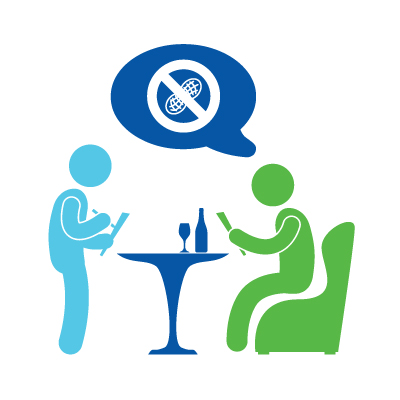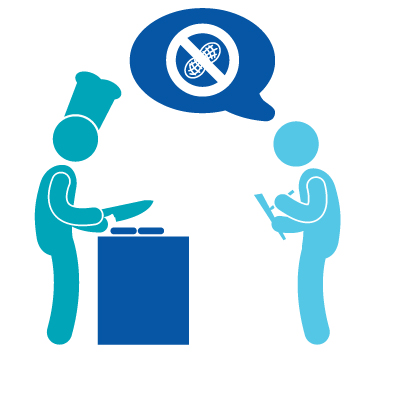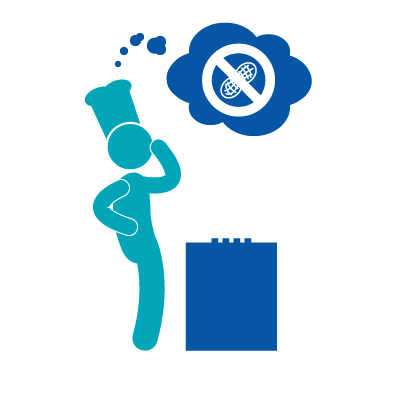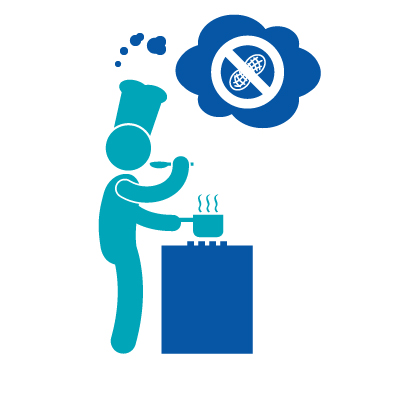
How Vaccines Work: A Step-By-Step Guide
Ever wonder how vaccines protect you? With so much misinformation out there, it’s important to know the facts about immunizations. This step-by-step guide will show you how vaccines prepare your immune system to prevent illness.
Step 1:
Various vaccines contain different forms of germs. The vaccines can have a weak version of the live virus, an inactive version of the virus, weakened toxins (also known as toxoids), or a specific part of the germ instead of the whole thing. These injections are not strong enough to give you the actual disease, but instead, they help teach your body how to interact with the active form of the germ should you come into contact with it.

Let’s use an analogy to make this a little clearer. Imagine you have a nut allergy, and you decide to try out a new restaurant. You are the first guest they have encountered who has this allergy. You order a dish from the waiter, but ask if the kitchen can prepare it without nuts.
Step 2:
Your body’s immune system responds by sending white blood cells to the foreign item. These white blood cells include macrophages, B-lymphocytes, and T-lymphocytes. The macrophages engulf the germ and break it down. The only part that isn’t broken down is the antigen, an identifier the germ carries around. The body uses this identifier to recognize the entire thing as a foreign, dangerous object. The macrophages carry these antigens to the lymph nodes.

At this point, your waiter goes back to the cooks in the kitchen and tells them you want your dish prepared without nuts.
Step 3:
The B-lymphocytes produce a custom antibody to go with the antigen from the specific germ. Each antibody your body produces is only effective against its particular antigen. The antibodies will detect the antigens, or identifiers, brought to the lymph node by the macrophages, and the B-lymphocytes will divide and produce a large number of antibodies to get rid of the antigens. Meanwhile, the T-lymphocytes locate germ-infected cells. Some of the T-lymphocytes will release a chemical that will eradicate the infected cells, and other T-lymphocyte cells will release a chemical that acts as a homing signal for the other white blood cells.

This would be when the cooks consider the recipe for the dish you ordered and figure out how to prepare it without nuts.
Step 4:
It takes your body some time to figure out how to make the B-lymphocyte and T-lymphocyte cells for this particular germ. Once the white blood cells successfully eradicate the bacteria or virus, your body will keep some of the B-lymphocytes programmed to produce these specific antibodies just in case you re-encounter it. The T-lymphocyte cells will also be able to recognize the germ again quickly.

The cooks at the restaurant will now be able to prepare the same dish without nuts much faster the second time you visit because they did all of the hard work during your first visit.
Since the germs in these vaccines can’t make you sick, they provide a risk-free way for your body to take the time it needs to learn how to protect itself in the future. However, since it takes some time for the body to create these B-lymphocyte and T-lymphocyte cells, you can still catch the disease if you were exposed to it right before or soon after you were vaccinated.
If you’re due for a vaccine, schedule an appointment with the experienced primary care physicians and pediatricians at Baylor St. Luke’s Medical Group to make sure you and your family are ready to handle any virus you might encounter.
Sources:
NIH, National Institute of Allergy and Infectious Diseases | How Do Vaccines Work?
CDC | Understanding How Vaccines Work
Find a Doctor
Looking for a doctor? Perform a quick search by name or browse by specialty.
